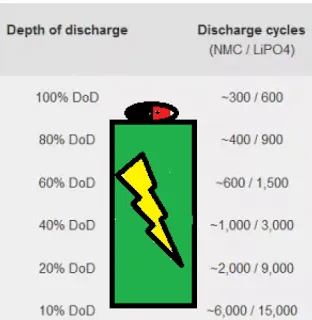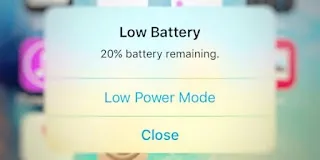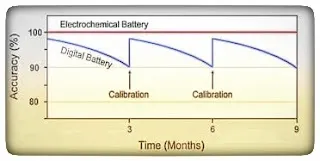Your phone's battery lifespan vs the normal
Does your phone's battery last as long as it should?
Typically, a contemporary phone battery's (lithium-ion) lifetime is a pair of – 3 years, concerning 300 – 500 charge cycles as rated by makers. After that, the battery capacity can visit
roughly 20%.
But will yours appear to induce a shorter manner earlier? If
affirmative, then maybe your charging habit has been taciturnly wrecking
your phone's battery health during the years.
How usually you charge can affect the battery life, for higher or worse. In short, the additional usually you prime up your battery, the better. To minimize battery degradation, prime up for each 10% come by battery level. And keep your battery level on the brink of the (50%) potential. Impractical and impossible, affirmative they're. However, these are just for maximizing battery health. There is an excellent area for tweaking to add convenience to the combination. Why are these recommended? As a result not unlike the recent Nickel, lithium-ion batteries get stressed by:
1. Depth of discharge, a.k.a. what proportion of battery is utilized before recharging.
2. Extreme battery levels, each low and high.
The widespread, obsolete beliefs concerning battery
Indeed, you must have also heard the other, which are:
1. Batteries ought to be drained fully and recharged to 100 %
2. Batteries lose capability if they're repeatedly recharged once solely being part drained.
And these 2 counsels that frequent charging can degrade battery capability instead, that WAS true—for the Nickel-based batteries; for they're stuck with memory impact. Simply put, they're going to "forget" their full capacity if they aren't discharged and charged from 1% to 100%.
Now, sport your lithium-ion battery from 1% to 100% routinely can take a bit of its battery life away.
How deeper discharge & low battery level degrade battery capability
To clarify, battery by itself, anyway, your habit can deteriorate. Even once simply sitting on a shelf. As you cycle the battery, irreversible internal structure changes happen. The metallic element count step by step drops as additional and additional get lodged onto the anode throughout traditional usage; they type a restrictive layer (named solid solution interface) that grows and will increase the battery's internal resistance, which ultimately lowers the battery capability.
Tying this to your charging habit, the restrictive layer grows quicker with the subsequent factors:
1. High discharge rate (how quick the battery is consumed)
2. Deeper discharge
3. Low battery level (as is the high battery level, however with a completely different structural change)
Worse is, the degradation of deep discharge escalates the more the battery is in its life cycle. The older your phone is, the additional your unhealthy charging habit damages your battery.
How much discharge is taken into account deep?
There is no boundary: the deeper you discharge it, the additional stress it inflicts on the battery. That means that topping up frequently extends battery life for metallic element batteries. During this regard, doing a full discharge, that is, to run your battery all the way down to 1/3, is that the most disagreeable. The table below is careful the quantity of usable cycle counting on the habitual depth of discharge.
What battery level is taken into account low?
Again, constant conception applies: the nearer it's to 1/3, the additional harmful it's to the battery. (And the same goes to battery levels nearer to 100%.) the most minuscule disagreeable battery level is round the middle (50%). Conjointly a reason why Apple suggests storing batteries at half-charged.
Except for this point, there's a boundary set by phone makers.
Definitely a customary you'll fall back on. And it's convenient: your phone can ne'er fail to prompt you once it gets this low. Although if you're feeling significantly protected from your battery, you'll recharge before it gets to twenty batteries.
The exception to the rule
That you ought to, on sure occasion, run your battery all the way down to 1/3 (full discharge).
What occasion?
1. Your battery share drops suddenly; say, it stays remarkably long at five-hundredths then jumps to thirty-fifth within the blink of an eye fixed.
2. Your battery shuts down once there's battery left.
Do a full discharge followed by a full charge for recalibration if these happen.
To calibrate your phone's battery:
1. Run your battery down till the phone turns itself off (without charging in between)
2. Charge your phone to 100% whereas the phone is off
3. At 100%, undo from the charger and power on your phone
4. If when powering on the battery isn't 100%, charge it to 100% and undo
5. Done! the total discharge and recharge cycle has recalibrated the battery's reading
Note: this will do nothing to avoid wasting battery life; it actually achieves the other …
Why will this happen?
Battery readings square measure thrown off as a result of not like the particular chemistry battery, the digital battery (the sensible chip on the battery) that shows North American country the reading doesn't age. The graph below visualizes the inconsistency between the 2 created over time.
Note: the values square measure for demonstration solely.
How typically do you have to calibrate your battery?
1. Whenever your battery starts showing inaccurate reading; otherwise, refrain from full discharge because it degrades battery capability.
2. When the phone isn't used for a protracted time.
Now, add everything together.
How typically ought I charge to prolong the battery life?
It's a matter of equalization convenience with battery longevity. To recap …
The best, however impossible way:
1. Recharge once the battery drops 10%; deeper discharge degrades the battery additionally.
2. Keep the battery as getting ready to the centre vary as potential. Extreme battery levels square measure levels nearer to 1/3 and 100% scale back battery capability.
But that defeats the aim of employing a smartphone, which is CONVENIENCE. That said, what you'll do instead are:
1. Recharge whenever convenient. Don't let it fall below 20 (or higher) and avoid absolutely discharging the battery unless standardization is required.
2. Unplug at battery level between 80 (or lower) and 100%. Don't let your phone lodge at 100% level for too long, i.e., plugging into the charger when absolutely charged.
There are no absolute rules to follow. Most counsel the 20 – 80 rule that you'll undoubtedly follow. You'll even do 45 – 75 or others.
As long as you perceive what's harmful to your battery, you'll tailor your charging habit consistent with your desires and daily routine. As a result, whereas you'll undoubtedly improve battery life considerably, it's pointless if it demands sacrificing your enjoyment and convenience; that is what your smartphone is meant to bring you.



